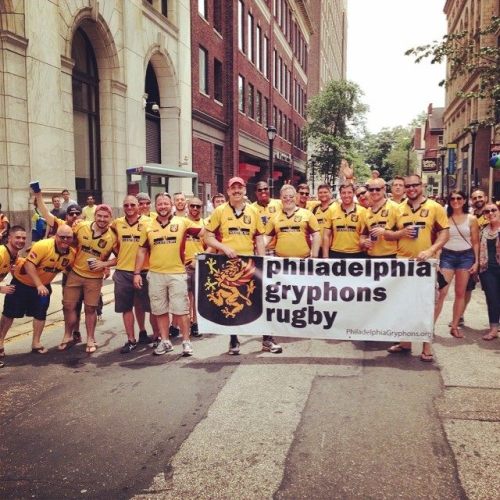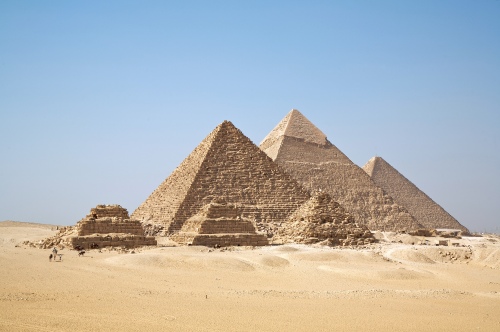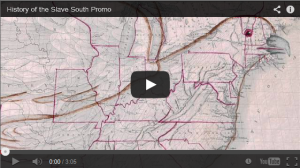Author: Professor Ralph Rosen, Department of Classical Studies
We began our Adriatic Antiquities adventure (a Penn Alumni Travel trip) in Venice, where we boarded our ship, the Aegean Odyssey. The ship was relatively small, accommodating only some 350 passengers, and delightfully appointed with two restaurants, several bars and many decks offering spectacular views from all perspectives. We had a small group of 8 adventurous Penn alums plus my wife, Ellen, and about 60 others in our tour group from various other alumni organizations across the country. Other passengers on the ship included a huge group from Australia and Great Britain, which added to the continual liveliness and good cheer of the trip. Almost every day there was a lecture of one sort of another to attend, since the ship had two art historians of their own onboard, and there were two Classicists in our group—myself, and a specialist in ancient Greek politics and Athenian history from Northwestern University. I gave two lectures early in the trip on various aspects of Greek culture, the first on Greek concepts of beauty and ugliness, the second on traditions of early Greek scandalous poetry or satire. I had also sent everyone in our group a copy of Aristophanes’ Clouds in advance of the trip to provide some background to our visit to Athens, and we met one afternoon during cocktail hour in the ship’s lounge to discuss it. This fast-paced comedy addresses the ‘culture wars’ of Classical Athens, pitting traditionalists against a new generation of thinkers and educators, and inspired a lively and memorable discussion.
On our first day we took a vaporetto to mainland Venice to visit the Cathedral of St. Mark. We had a superb guide who walked us through the complex and fascinating history of this amazing structure. The Cathedral dates to the 9th century CE, though the current building can be traced to the 11th. The interior walls and ceilings are covered with gold mosaics of dazzling beauty, telling various stories from the Old and New Testaments, and about the saints important to the Cathedral, such as Sts. Mark and Clement. We learned that much of these were poorly ‘restored’ in the 19th century, and are thought to have suffered much as a result; but to the viewer from ground-level, these mosaics are simply breathtaking.

That evening we were treated to a very special private visit to the Peggy Guggenheim Museum in Venice. This museum, located in what was once Guggenheim’s private home along the Grand Canal, the Palazzo Venier dei Leoni, houses an extraordinary collection of modernist, surrealist and abstract expressionist artists. We rode back to the ship in small boats along the canal in the early evening as the golden Venetian sun made the Renaissance buildings on the land magically glow.

From Venice we sailed directly across the Adriatic over night to our first destination in Croatia, Zadar, in the northern region of the Dalmatian coast. The early history of this entire area is one of continual tension between indigenous inhabitants and incursions from Greeks with an eye on colonization. When Rome became the dominant power in the Mediterranean in subsequent centuries, one finds archaeological traces of their settlements and Romanization as well. By the middle ages, the influence of Venice was ubiquitous among the cities along the Dalmatian coast, and we learned much about these many historical layers from our expert guides.
After Zadar, we made our way down the coast to the Croatian cities of Split, Dubrovnik and the gorgeous peninsula of Korcula. We sailed to Split during the night, and we awoke in the port as an intense thunderstorm was just beginning to break up, offering beautiful dark-grey cloudscapes interspersed with sunlight and blue skies.

Our day in Split began with a visit to the palace of Diocletian, who built this massive complex as his retirement home in 305 CE. Diocletian was emperor of Rome from 284-305 CE, which was a particularly colorful and complicated political period. Diocletian had first appointed a co-emperor Maximian in 286, but for strategic reasons appointed two more co-regents in 293, Galerius and Constantius, dividing up the empire into four different sectors. This historical period became known as the ‘tetrarchy’ or ‘rule of the four emperors.’ Quite unusually, Diocletian actually abdicated his rule and then retired to the lavish palace complex which he had built for himself in Split. From the 7th century CE on, long after it had been abandoned by the Romans, locals moved into the structures, setting up homes and businesses. Domitian’s mausoleum, for example, was transformed into the Cathedral of St. Duje (Domnius) built over an ancient shrine. Built at the beginning of the 7th century, we were told that it’s the oldest Catholic cathedral in the world which hasn’t had to be completely rebuilt. The site reflects today all these many historical layers of use, re-use, re-purposing, occupation and now, tourism. Side trips in the afternoon brought us inland to two other Roman sites, Salona and Trogir. In Salona we visited a Roman burial site, where we saw some wonderfully preserved Roman sarcophagi, along with tombs and mausolea from later periods as well. Trogir was a modest little town, founded as a Greek colony in the 3rd century BCE, now rich in medieval and Byzantine architectural sites; we had time to visit the unusual and impressively well-preserved Romanesque-Gothic church dedicated to St. Lawrence (13th century.). I have to confess that simply sitting in the public square of this utterly charming town late in the afternoon with an espresso and biscotto was one of my favorite moments of the trip!

Korcula was a magical place—we had to approach from the ship in small boats across shimmering blue-green water. At the coastline the water was crystal-clear and you could watch schools of fish from the docks going about their business. The Old Town was built in a fishbone pattern to maximize the flow of winds, thus creating a kind of urban air-conditioning—or so we were told by our genial guide. She also told us of the dispute about Marco Polo. Despite the fact that the handbooks all list his birthplace as Venice, Korcula claims him as one of their native sons. Whether or not this is true, every other street restaurant and guest-house in Korcula is named ‘Marco Polo’-something-or-other.

Our next stop was Dubrovnik, said to be one of the best-preserved medieval walled cities in Europe. It had a touristic feel about it, but we still enjoyed its antiquities, particularly the Dominican monastery with its 15th-century cloister and the Cathedral of Our Lady, which has on display a painting of the Assumption by Titian.
We continued our journey down the Dalmatian coast heading for Greece, but along the way the ship’s captain made a detour to take us into the famous Bay of Kotor, a fjord-like inlet in SW Montenegro, situated between Croatia and Albania. The sea was calm and the sun shining brightly as we sailed around this breathtakingly beautiful part of the Adriatic.

The antiquities we visited along the Croatian coast were largely Roman remains and later, though most of the sites had been settled earlier by Greek colonists. The remaining sites on our trip were in Greece proper, and often reflected Mediterranean culture from even earlier historical periods. Most of our guides, however, were extremely knowledgeable about modern Greek history as well, and we learned much from them about the long and fraught occupation of Greece by the Ottomans, and eventual emancipation and independence in the 19th century.
Our first visit on Greek soil was the island of Corfu, also known by its Greek name Kerkyra, and to students of Thucydides, Corcyra (Thucydides famously documented the effects of factional strife there in the 5th century. BCE). We toured the Venetian fortifications, which afforded some amazing views along the coast, but more charming was the town itself—a bustling place inhabited by real people living real lives and not only for tourists. A few of us explored the old city in the afternoon, and even stumbled upon the Corfu Synagogue, where we met a caretaker who was happy to show us around. Their traditions (and building) go back at least 400 years, though the community is small, and reduced even more as a consequence of WWII.

Not too far from Corfu is a small port called Preveza, where we docked for the morning and took an inland excursion to the town of Arta. The visit to Arta was spectacular. The famous ‘Bridge of Arta’ crossing the Arachthos River dates from the early 17th century, but its foundations date to the Roman period.

According to local legend, a bird came to the original architect and declared that the bridge could only be completed if the architect would sacrifice his wife. While she was being buried alive, it is said, she put a curse on the bridge, but when told that her brother would be crossing the bridge she changed her curses to blessings. Near the bridge is the amazing cathedral Church of the Paregoretissa, built at the end of the 13th century. This is a beautifully preserved and well maintained example of grand Byzantine architecture, with spectacular mosaics decorating the interior. The central dome has a magnificent mosaic of Christ Pantokrator with angels and prophets, and interior walls are graced with grand religious frescoes from the 16th and 17th centuries.

From Preveza, we sailed down the western coast of the Peloponnese to Olympia, famed birthplace of the Olympic games. The Greeks have done a superb job with this site, creating a beautiful archaeological park with elegant landscaping, excellent signage and an inviting, informative museum of artifacts from their excavations. Olympia was internationally important from the 8th century BCE well into late antiquity, by which time it had fallen into Roman hands, but by the 6th century CE it was covered over by alluvial deposits, evidently the result of flooding from repeated tsunamis. It wasn’t re-discovered until 1766, and the first excavations only began in 1829. The site itself indicates an expansive array of buildings within a sanctuary, including temples to Zeus and Hera, and adjacent to this area are a hippodrome for horse and chariot racing and stadium for track events.

Overnight we sailed from Olympia to the famous port city of Nafplio. This was a particularly busy day for our group, with two trips scheduled (the afternoon trip was optional, but we couldn’t get enough!). In the morning we made our way by bus to the famous site of Mycenae. What I found particularly interesting about this site was how remote and wild the area seemed to be today in light of the fact that during the heydey of Mycenaean culture, in the 14th century BCE, it was a major cultural center with a sizable population. The monumentality of this site was astonishing—huge ‘Cyclopean’ stone blocks, grand archways, brilliant gold masks and large intricately patterned pottery. This was clearly a rich and sophisticated society that left a huge mark on subsequent Greek culture.

After a restorative lunch in the town square of Nafplio, we set out again for Epidaurus, an area that rose to prominence in the Classical and Hellenistic periods of Greek history. Epidaurus has two main sites of interest, both iconic of ancient Greek culture. The first is the great temple of the healing god Asclepius. There were many healing shrines to Asclepius around the Mediterranean, but Epidaurus’ was one of the largest and most famous. People with a variety of afflictions would come from all around seeking a cure, and an entire micro-economy seems to have emerged around such sites. There was a whole industry of priests, shopkeepers selling terracotta votive offerings (usually representing whatever organ or body part needed healing), guest-houses, etc. The idea was for the sick person to spend the night sleeping inside the temple (for a fee, of course), so that the god Asclepius could appear in a dream and offer instructions on how to be healed. This process was called ‘incubation’, which literally means ‘sleeping in’. Many of the stories of these cures have come down to us on stone inscriptions publicly erected by grateful patients or publicity-minded temple administrators. These narratives often seem a little far-fetched to us today, but evidently there were many satisfied customers!
Epidaurus is also famous for its amazing theater, where Greek tragedies and comedies (and other dramatic forms) would have been performed. The remains of this theater date from the Hellenistic period; it’s one of the best preserved and most beautiful examples of theater construction. The theater could hold some 13,000 spectators in the classic Greek semi-circular form, with rows of seats rising steeply into a hill. The acoustics are uncannily live, as is continually being demonstrated by visitors who clap their hands or orate in the circular orchestra where the actors would have performed. In this theater there really wasn’t a bad seat in the house!

Our last destination was, at long last, the glorious city of Athens itself. We pulled into the harbor at Piraeus in the morning, around 10 km from the city, and wasted no time in preparing ourselves for the trek to the Acropolis and its Parthenon—perhaps the single most iconic building in all of Western culture. It was hot and crowded with tourists, but we all made it to the top of the hill and stood in awe of the Parthenon and the spectacular panoramic views of the entire city. I think this was an emotional moment for all of us, and our expert guide added plenty of detail to complement our feelings of transcendence—its origins in fifth century BCE Athens as part of Pericles’ building program, its Hellenistic history, its fate under the Romans, its later re-purposing by Christians, and later still by Ottoman Muslims.

We left in a state of exhilaration, and relocated for our last two nights in a hotel in the center of the city. Our afternoon was unscheduled, so we all went in different directions. I made my way to the National Archaeological museum, where I met one of the other Penn alums, and we spent a wonderful afternoon exploring their incredible collection. There was room after room of all the choice artifacts from all periods of Greek history; I was quite overwhelmed, really, by the richness of this collection—rooms of archaic kouroi, huge Geometric-style vases, Cycladic art, and hundreds of black-figure and red-figure Athenian pottery, just to name a few of the highlights.
Our final morning was spent at the new Acropolis Museum, adjacent to the Acropolis itself, but at ground level looking up. The building only opened in 2009 after years of planning and false starts, but is now a marvel of architecture and city planning. Designed by renowned architect Bernard Tschumi, the museum houses all the artifacts found on the Acropolis, and itself sits on top of another archaeological site of Classical and Byzantine urban remains. Glass flooring at the entrance allows visual access to the excavations below and juxtaposes brilliantly the artifact and modern repository of artifacts. The top part of the museum is in parallel alignment to the Acropolis, affording the viewer both a window on, and a kind of mirror to, the object of its contemplation up the hill. This was an expansive, uncluttered and intelligently laid out museum, and a powerful testament to the aesthetic and political sophistication of Greek culture.
Our trip was unfortunately nearing its end, but we had time for one more excursion that afternoon, to the Benaki Museum, which was only a short walk from our hotel. The Benaki Museum might be considered Athens’ answer to Philadelphia’s Barnes Museum in that it houses the private collection of art and antiquities from a single collector with an idiosyncratic vision, that of Antonis Benakis. This elegant private mansion contains an extraordinary and eclectic collection of mostly Greek art, from antiquity to the 20th century. Since Benakis’ death in 1954 the museum has continued to add to its collection (unlike the Barnes), which now has more than 37,000 objects. After almost two weeks of continual exposure to ancient artifacts, I think most of us found it refreshing to see a deep collection of fine and decorative arts from the 18th through 20th centuries. They have an especially fine collection of cultural artifacts from the period of Greek independence (1821-1835). Among these is a marvelous portrait of the great English poet, Lord Byron, in traditional Greek dress, who was so committed to the cause of Greek independence that he even took command of a rebel army against the Turks in 1824. Unfortunately, he died of an infectious disease before the actual attack, but his inspirational passion for everything Greek made him something of a national hero after his death.

After a final gathering in the evening at the hotel to celebrate our rich and glorious trip together, and to say our sad goodbyes, we prepared ourselves for the return home. We packed an incredible amount of travel and learning into these two weeks, but I’m pretty sure everyone in our group was secretly wishing it would never end.

Professor Ralph Rosen with his group of Penn alumni and friends.
[Interested in joining a future Penn Alumni Travel trip hosted by a Penn faculty member? Click here to view our entire 2015 schedule. We will be returning to Greece and Italy on the following tours: Southern Italy and Sicily (April/May 2015), Ancient Greece and Turkey (Sept/October 2015), and Portrait of Italy (October 2015).]




























![100104-amazon-lost-civilization-circles_big_thumb[3]](https://pennalumniblog.files.wordpress.com/2014/08/100104-amazon-lost-civilization-circles_big_thumb3.jpg?w=500)















































